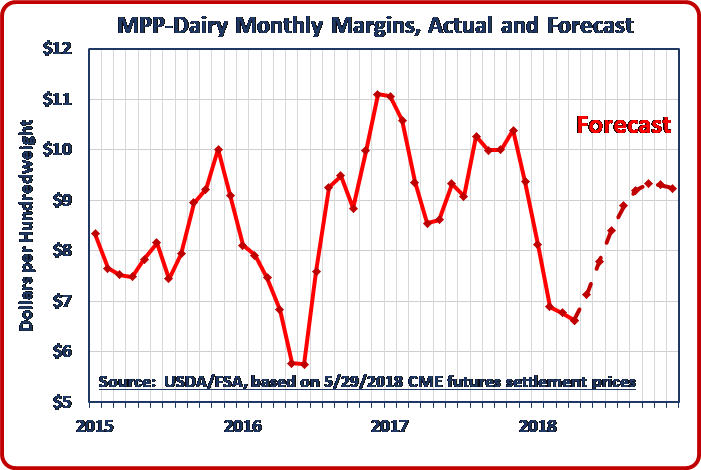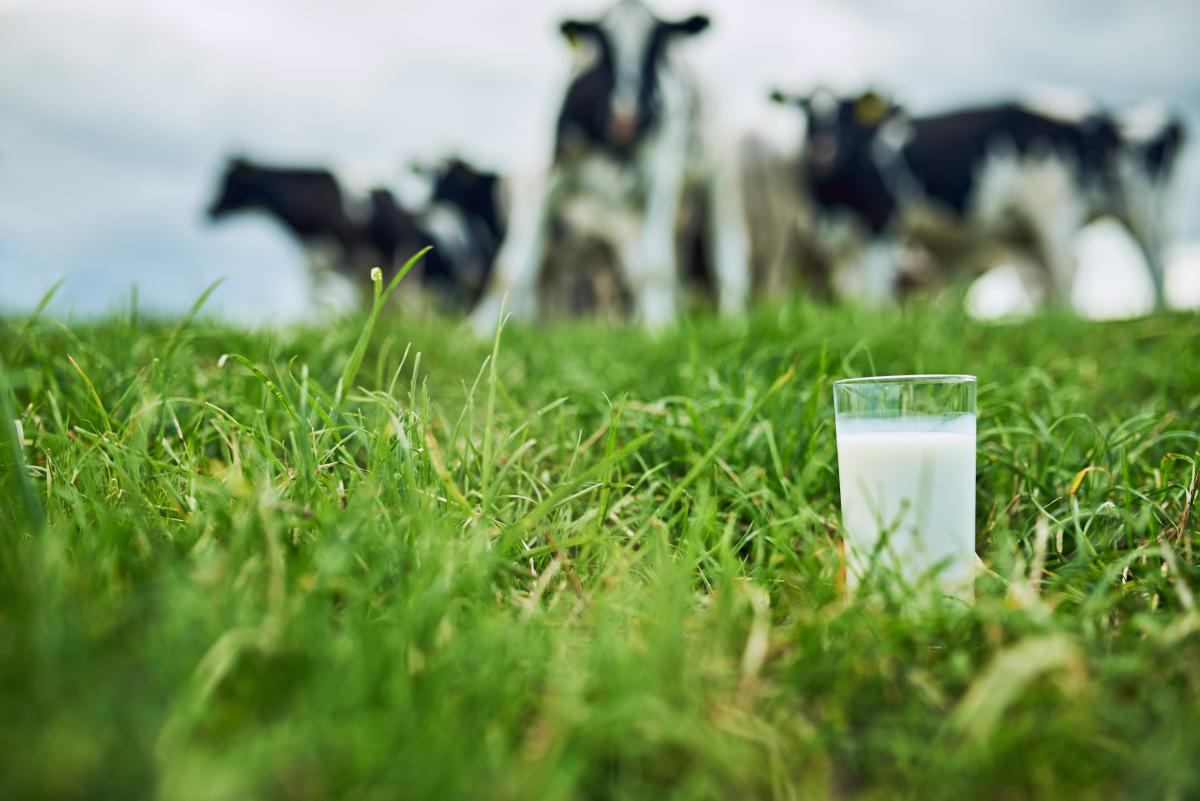The newspaper headlines in 2018 have painted a grim portrait of the difficult financial conditions facing many of America’s dairy farmers. The prolonged slump in milk prices we’ve been going through has taken a painful toll on farmers, raising questions about the outlook not just for individual farms, but for the entire U.S. dairy sector. Hopefully, the recent positive movement in prices signals a rebound – as the futures markets are currently forecasting – that will continue as we move into summer.
When we face these difficult and uncertain times, it’s important to remind both policymakers and consumers of the tremendous economic importance of the entire U.S. dairy value chain, from grass to glass. Despite the ongoing volatility in milk prices, the overall financial footprint of dairy farming, processing and retailing is significant. And that’s why NMPF, along with the International Dairy Foods Association (IDFA) and the U.S. Dairy Export Council (USDEC), are joining forces this spring to launch a new information campaign to inform those outside of our industry about the ripple effect of dairy production.
The campaign’s slogan is straightforward: “Got Jobs? Dairy creates jobs, Exports create more.” The idea is to illustrate, with extensive data sources as well as human interest stories, how the process of bringing dairy foods to market creates jobs in every state – and a growing number of those are tied to marketing dairy products internationally, not just domestically.
The centerpiece of the “Got Jobs?” campaign is a website, http://gotdairyjobs.org/, that features state-by-state fact sheets on the economic impact of exports, as well as the state-level impacts of the entire dairy products industry. The site contains detailed information from the Dairy Delivers℠ economic impact tool created by IDFA, quantifying that the U.S. dairy sector supports nearly 3 million American workers, generates more than $39 billion in direct wages and has an overall economic impact of more than $628 billion.
This effort is a unique collaboration between our three organizations, because our members all have something important to contribute to the larger narrative about the economic impacts of U.S. dairy production. In addition to the local news stories about the current challenges confronting many dairy farmers, there’s obviously been a huge national public policy focus in the past two years on the health of the U.S. economy, and the role of farming, manufacturing and trade in that equation. So, this is a great time for the collective dairy community to add a fresh perspective to that discussion.
This “Got Jobs?” collaboration emphasizes numbers and data, as we live in a world increasingly defined by the big data we collect and measure. But numbers are only a part of our narrative, and it’s hard to tell interesting stories just with figures. That’s why this campaign will also feature the faces and names of the real people involved at different points in the dairy value chain.
It’s important to note that this is not an advocacy campaign; the effort is not about taking a position on any piece of legislation. That said, we at NMPF will continue emphasizing the importance of export-friendly policies that allow U.S. farmers and processors to reach customers in foreign markets. This effort also will help remind influential audiences that domestic dairy production is an economic powerhouse with significant, far-reaching tentacles throughout the entire United States. Dairy producers make contributions in every single state, not just in few states or regions. Very few other agricultural commodities can make that claim.
The fact that this campaign is being launched as the 2018 Farm Bill is being developed on Capitol Hill is coincidental, but the timing is fortuitous. It’s important for policy makers to understand that decisions made in Washington can have real-world impacts, positive and negative, on our industry. We need an effective safety net for farmers to help them endure the tough times they’re now experiencing. We also need regulatory certainty for employers, and we need fair trade agreements to help us reach customers outside of our borders.
This last point bears repeating. One of the major reasons prices collapsed after 2014 – and haven’t fully recovered in the years since then – was a drop-off in international dairy demand growth. Conversely, exports are rebounding nicely this spring, and the farm-level price outlook for the last half of this year is getting better. Our own export sales program, Cooperatives Working Together (CWT), is moving large volumes of cheese, butter and whole milk powder into international markets.
The best thing we can do for dairy farmers as well as dairy companies is to create opportunities for growth. Some of that is to be found here at home, but an increasing focus must be on sales to foreign customers. The entire dairy community has a great future, and we need to continue working together to move us forward – strongly and boldly – into that future.

 Under the dairy Margin Protection Program (MPP), the monthly margin for April 2018 decreased an additional $0.15 per hundredweight from March, to $6.62/cwt. This was the fifth consecutive drop in the MPP monthly margin. The April all-milk price increased by $0.20/cwt. from March, to $15.80/cwt. The April feed cost formula was up by $0.35/cwt. from March, with most of the increase – on a per-hundredweight-of-milk basis – due to an increase in the cost of alfalfa hay. The prices of corn and soybean meal also contributed smaller increases to the MPP feed cost formula calculation.
Under the dairy Margin Protection Program (MPP), the monthly margin for April 2018 decreased an additional $0.15 per hundredweight from March, to $6.62/cwt. This was the fifth consecutive drop in the MPP monthly margin. The April all-milk price increased by $0.20/cwt. from March, to $15.80/cwt. The April feed cost formula was up by $0.35/cwt. from March, with most of the increase – on a per-hundredweight-of-milk basis – due to an increase in the cost of alfalfa hay. The prices of corn and soybean meal also contributed smaller increases to the MPP feed cost formula calculation.
 An amendment to the 2018 House Farm Bill that would have allowed the interstate sale of unpasteurized milk was soundly defeated thanks to strong opposition from National Milk, its member cooperatives, several other key industry stakeholders, as well as consumer and public health advocates.
An amendment to the 2018 House Farm Bill that would have allowed the interstate sale of unpasteurized milk was soundly defeated thanks to strong opposition from National Milk, its member cooperatives, several other key industry stakeholders, as well as consumer and public health advocates. NMPF continues to work with its congressional allies to ensure the enactment of a bipartisan, bicameral Farm Bill before the current one expires on Sept. 30. Both the House and Senate are making progress on their respective versions of the Farm Bill, with action likely in both chambers in June.
NMPF continues to work with its congressional allies to ensure the enactment of a bipartisan, bicameral Farm Bill before the current one expires on Sept. 30. Both the House and Senate are making progress on their respective versions of the Farm Bill, with action likely in both chambers in June. The NMPF Board of Directors voted in early June to continue the Cooperatives Working Together (CWT) program, the historic dairy farmer self-help export assistance effort.
The NMPF Board of Directors voted in early June to continue the Cooperatives Working Together (CWT) program, the historic dairy farmer self-help export assistance effort. ARLINGTON, VA – The board of directors of the National Milk Producers Federation (NMPF) today voted to extend funding through 2021 for Cooperatives Working Together (CWT), the farmer-funded export assistance program that assists member cooperatives in exporting dairy products.
ARLINGTON, VA – The board of directors of the National Milk Producers Federation (NMPF) today voted to extend funding through 2021 for Cooperatives Working Together (CWT), the farmer-funded export assistance program that assists member cooperatives in exporting dairy products.




